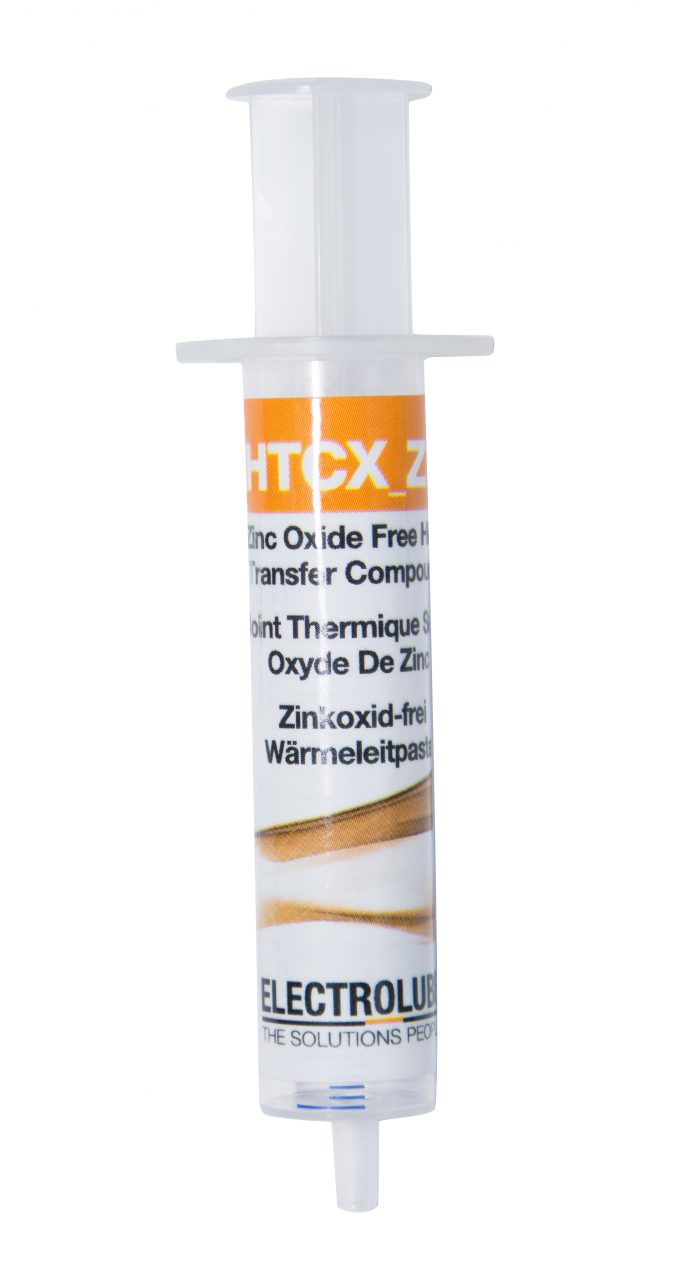Electrolube, the global manufacturer of electro-chemicals, has announced the launch of a new Non-Silicone Heat Transfer Compound, HTCX_ZF. The high-performance thermal management paste is an entirely Zinc Oxide (ZnO) free version of one of the company’s best-selling thermal products, HTCX, with the additional benefits of improved thermal conductivity, lower oil bleed, and lower evaporation weight loss. Designed for use as a thermal interface material, HTCX_ZF is ideal for applications where the use of zinc oxide, a marine pollutant, is restricted and silicones are prohibited, such as offshore utilities for instance. The new RoHS-2 compliant thermal paste is also highly suitable for applications exposed to varying temperature and humidity conditions.
HTCX_ZF is a highly stable, non-curing paste, which enables simple and efficient rework of components if needed and is recommended where efficient and reliable thermal coupling of electrical and electronic components is required, and between any surface where thermal conductivity and heat dissipation is important. It offers efficient thermal conductivity of 1.65 W/m.K for a range of applications, remaining stable and keeping a low oil bleed percentage through a wide operating temperature range from -50°C to +180°C and potentially higher, depending on the application and testing in relevant end-use conditions.
HTCX_ZF can be applied to the base and mounting studs of diodes, transistors, thyristors, heat sinks, silicone rectifiers and semi-conductors, thermostats, power resistors and radiators, to name but a few. When the contact surfaces are placed together, a firm metal-to-metal contact will only be achieved on 40 – 60% of the interface, depending on the smoothness of the surfaces. This means that air, which has relatively poor thermal conductivity, will account for the balance of the interface. Only a small amount of HTCX_ZF is required to fill these spaces to dramatically increase the effective surface area for heat transfer. HTCX_ZF is also easy to apply, ensuring the best results are achieved with a uniform, thin coat applied between mating surfaces. For further information, please visit http://www.electrolube.com.








